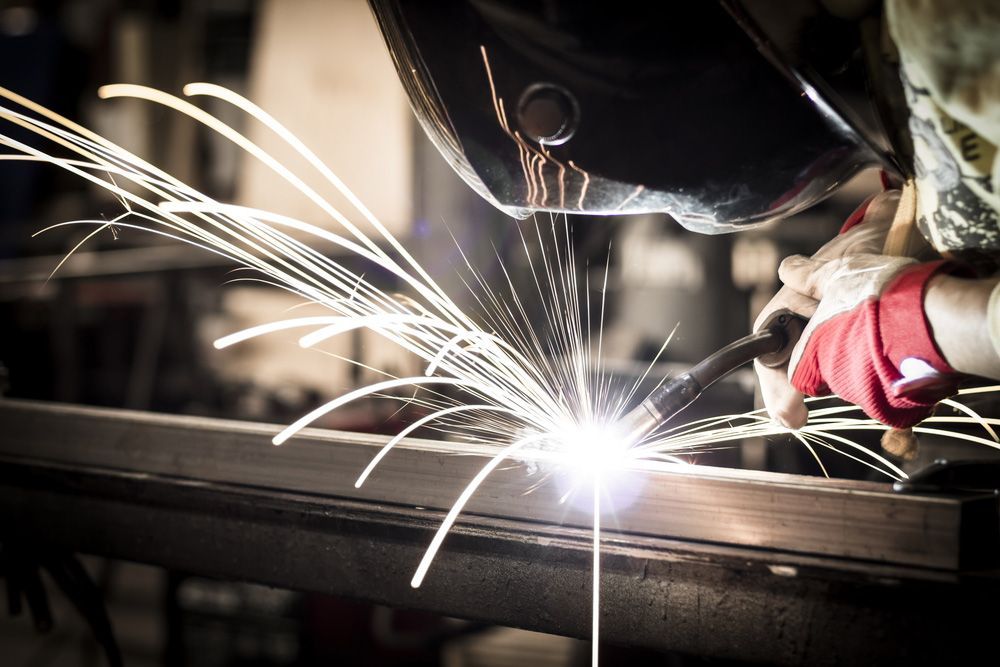Call Now For a Free Quote
07 5437 0817
Blog > Comprehensive Guide To Metal Fabrication Coating Types And Differences
A Comprehensive Guide To Metal Fabrication Coating Types And Their Differences
At ABC Metalworks, we pride ourselves on providing top-quality metal fabrication services for a diverse range of industries. In this article, we discuss the different types of coatings available for metal fabrication, their unique characteristics and their respective applications.

Powder Coating: A Durable And Attractive Finish
Powder coating is a popular choice for metal fabrication projects due to its durability, environmentally-friendly nature and wide range of available colours. The process involves applying a dry powder, usually made of polyester, epoxy, or a blend of both, to the metal surface using electrostatic spray deposition. The coated metal is then cured in an oven, creating a strong and even finish.
Key Benefits Of Powder Coating
- Exceptional durability: Resistant to chipping, scratching and fading
- Environmentally friendly: Almost no VOC emissions and excess powder can be reused
- Versatile: Available in a vast range of colours and finishes, including gloss, matte and textured
- Corrosion resistance: Provides an extra layer of protection for metal components
- Galvanisation: Long-Lasting Corrosion Protection
Galvanisation is the process of applying a layer of zinc to steel or iron components to prevent rust and corrosion. This coating is achieved through hot-dip galvanising or electro-galvanising, depending on the desired thickness and application requirements.
Key Benefits Of Galvanisation
- Proven corrosion resistance: Protects the metal from rust and environmental factors
- Low maintenance: Requires minimal upkeep, saving time and money
- Longevity: Can last up to 50 years or more, depending on the environment
- 100% recyclable: Zinc and steel can both be recycled without losing their properties
Anodising: A Superior Finish For Aluminium Components
Anodising is a specialised electrochemical process that forms a protective oxide layer on
aluminium
surfaces. This process not only increases the metal's resistance to wear and corrosion but also allows for colouring and sealing.
Key Benefits Of Anodising
- Enhanced durability: Improves wear resistance and prevents corrosion
- Aesthetic appeal: Allows for colouring and various finishes
- Environmentally friendly: Produces less waste and fewer emissions than other coating methods
- Non-conductive: The anodised layer acts as an electrical insulator, preventing short circuits
Plating: A Versatile Coating Solution
Plating involves depositing a thin layer of metal onto a substrate, typically through electroplating or electroless plating. Common plating materials include gold, silver, nickel, and chrome, each offering unique properties for specific applications.
Key Benefits Of Plating
- Improved appearance: Provides a shiny, polished finish to metal surfaces
- Enhanced durability: Increases wear resistance and reduces the risk of corrosion
- Electrical conductivity: Can improve conductivity in electrical components
- Customisation: Offers a wide range of plating materials to suit specific needs
Choosing The Right Coating For Your Metal Fabrication Project
At
On the Spot Steel Fabrication, we have a diverse range of
steel fabrication
capabilities to suit a range of needs. Whether it’s metal works or
commercial fabrication, we can cater to large and small scale projects. Get in touch today to discuss your metal fabrication needs via our
website, or give us a call on
(07) 5437 0817.
Testimonials
We have used On the Spot Steel Fabrication for over 12 years for a variety of projects. Over this time Chris and his team of skilled fabricators have consistently produced outstanding results. On the Spot Steel Fabrication value workmanship and professionalism and have invested in the latest technologies to ensure all projects are accurately cut and fabricated to exact specifications. We have no hesitation in recommending On The Spot Steel Fabrication for any steel manufacturing solutions.
- Landmark Products
About Us
On the Spot Steel Fabrication Sunshine Coast specialises in aluminium and steel fabrication, CNC drilling as well as structural steel supply and installation.
From large commercial projects through to small scale domestic projects, we provide high-quality workmanship at competitive rates.
Contact one of our friendly team for a free quote today!
QBCC: 1100024
Contact Us
Mon-Fri 07:00 am - 03:30 pm
Sat-Sun Closed
Locate Us




